Explore Copenhagen’s castles and palaces and get a glimpse into Denmark’s long royal history. From the crown jewels at Rosenborg Palace to the impressive Kronborg Castle that inspired Hamlet, each place adds its own chapter to our story.
Join us on a journey through these remarkable landmarks that bring centuries of history to life! Some castles and palaces are closed to the public, but you can still admire them from the outside while taking a stroll in the surrounding areas.
Where to Find Copenhagen’s Castles and Palaces?
You’ll find quite a few castles and royal palaces in Copenhagen and the surrounding areas, most of which are open to the public and tell a fascinating story of Denmark’s royal history.
From the current home of the royal family to the castle that inspired Shakespeare’s Hamlet, we’ll guide you through these magnificent landmarks.
The Lineage of the Royal Danish Family
Denmark is home to one of the world’s oldest monarchies, stretching back more than 1,000 years. The first king, Gorm the Old – a Viking, of course – ruled from 936 to 958. After him, his son, one of Denmark’s most well-known Vikings, Harald Bluetooth, took over the kingdom.
Following the reign of the last true Viking king, Sweyn II Estridsson, in 1074, the Danish monarchy gradually moved away from the Viking traditions. By the mid-12th century, Denmark had transitioned to a medieval monarchy.
Among the most famous monarchs include:
- King Christian IV (1588-1648): Innovator and builder, Christian IV left a lasting legacy with iconic landmarks like Rosenborg Castle, Børsen, The Round Tower, Frederiksborg Castle, Nyhavn, and Christianshavn
- King Christian VII (1766-1808): Mostly known for his struggles with mental illness, Christian VII’s reign was dramatized in the Oscar-nominated film A Royal Affair
- King Christian X (1912-1947): As a symbol of Danish resistance during the Nazi occupation, Christian X famously rode through the streets of Copenhagen daily without security. He also took steps to protect Denmark’s Jewish population from persecution
Visit Amalienborg Palace – The Home of the Royal Family
As the official residence of the King and Queen, not all of Amalienborg Palace is open to the public. However, the palace does have an interesting museum showcasing royal artifacts, furniture, clothing and more. Walking through the various rooms offers a sense of grandeur and rich history within these walls.
If you want to feel a bit like royalty yourself, stand by one of the windows and wave to all the commoners out in the courtyard. Or perhaps stop by the museum shop to pick up a royal trinket.
At noon, you can experience the traditional Changing of the Guard in the palace courtyard. This is one of the most popular attractions in the city, and we highly recommend it, as the tradition has been linked to the royal family for hundreds of years.
Pay a royal visit to Christian VIII’s Palace.
Join Stromma’s Hop On-Hop Off buses to stop 3 – The Marble Church.
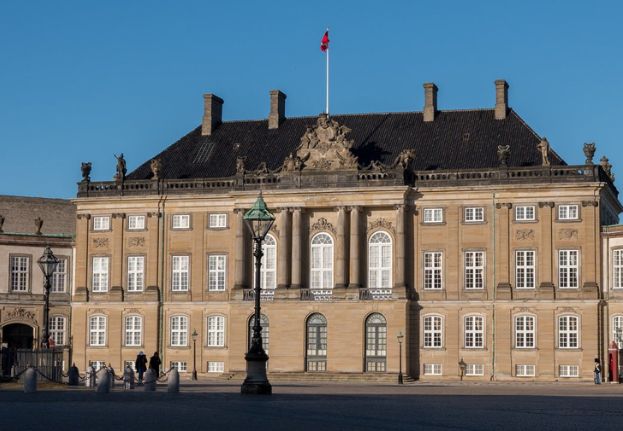
Photo by Daniel Rasmussen
Marvel at the Crown Jewels at Rosenborg Castle
Built by King Christian IV, the 400-year-old Rosenborg Castle is an important landmark in Copenhagen. It was originally intended to be the King’s summer residence, but it became his favorite place. In fact, his final wish was to be transported to Rosenborg Castle to take his last breath.
The collection of crown jewels began with Queen Sophie Magdalene, wife of King Christian VI’s, whose last testament stated that her jewels should always ‘be with the crown’. She wanted to ensure that the royal family would always have access to extraordinary jewelry. Over the years, more pieces have been added to the collection, and some are still used on special occasions today. Only the reigning queen can wear them, and they must not leave the country.
Admire the jewels at Øster Voldgade 4A.
Take Stromma’s Hop On-Hop Off buses to stop 9 – Rosenborg Castle.
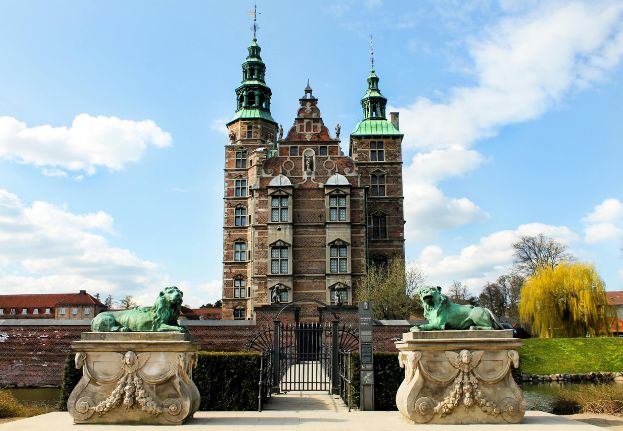
From Royal Palace to Political Hub
In 1731, King Christian VI decided to tear down Copenhagen Castle, as it was beginning to fall apart, and he wanted something more modern.
The first Christiansborg Palace was completed in 1740, and his lavish residence was the most magnificent building in the country. However, it seemed cursed, as it burned to the ground in 1794, leaving only the stables, a few pieces of furniture, and some paintings unscathed.
A second version of the palace was finished in 1828, only to suffer the same fate in 1884 when it burned down again. This time, the church survived the fire, along with some furniture, paintings, and relics that can still be seen in the palace today.
The Christiansborg Palace that graces the city today was completed in 1928. One wing housed King Christian X and his family, while Folketinget and Landstinget (the Danish Parliament) were placed in another wing, combining royal and political power in the same building.
Explore the palace at Prins Jørgens Gård 1.
Hop off at stop 1 – Ved Stranden on Stromma’s Hop On-Hop Off buses.
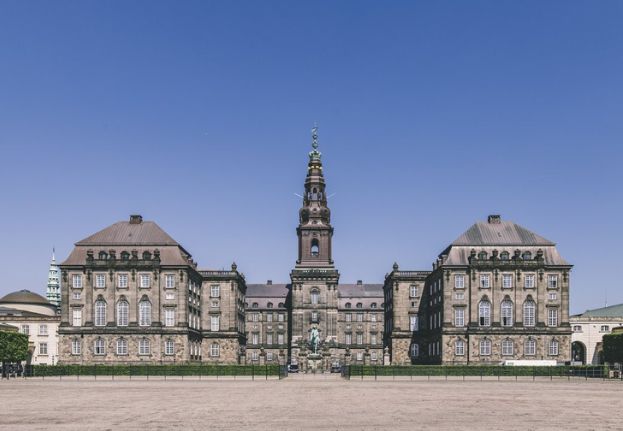
Photo by Martin Auchenberg
To Be or Not to Be – Explore Hamlet’s Kronborg Castle
Visit the impressive Kronborg Castle, the inspiration for Shakespeare’s Hamlet! Join a guided tour and hear tales about the Danish royal court that laid the foundation for this world-famous play.
Built in the early 15th century and strategically placed near the narrowest point of the Øresund Strait, Kronborg was essential in controlling the entrance to the Baltic Sea. Later, it became famous for the extravagant court life, fancy parties, and cannon salutes - stories of which even reached England and Shakespeare.
In the casemates beneath the castle, the legendary Holger Danske is sleeping, ready to rise and defend Denmark if needed. While Holger isn’t a historical figure, his character draws from real-life knights and warriors. Over time, his tale took on a life of its own, turning him into a symbol of national pride and resilience.
Step back in time at Kronborg Castle, 3000 Helsingør (Elsinore).
How to get there by public transportation:
- From Copenhagen Central Station, take the regional train to Helsingør St (approximately 55 minutes)
- From Helsingør St., walk to Kronborg Castle (approximately 1.1 kilometer)
- Plan your trip with Rejseplanen
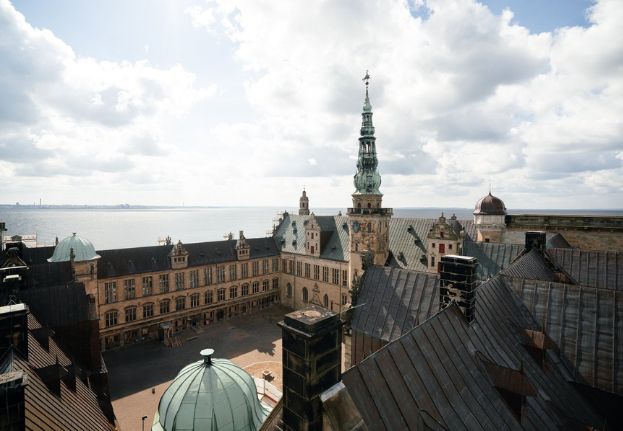
Photo by Marvin Kuhr
Discover Frederiksborg Castle’s Rich History
Frederiksborg Castle is another architectural marvel built by King Christian IV. The Renaissance castle was built in the 17th century and was initially used to showcase the king as a rich and powerful monarch.
In 1859, a major fire destroyed most of the interior, leaving only the outer walls in many places. The castle was reconstructed, but the royal family decided not to live there anymore, and it was instead turned into a museum.
The unique castle chapel survived the fired and still features the original decorations dating back to King Christian IV. You can also see other historical treasures, such as the gold, silver, and ebony altarpiece.
How to get there by public transportation:
- From Copenhagen Central Station, take S-train Line A to Hillerød St. (approximately 38 minutes)
- From Hillerød St., you can either:
Walk, either along the beautiful Castle Lake (Slotssøen) or through the vibrant city center of Hillerød (approximately 1.2 kilometers)
Take bus 301 or 302 directly to the castle (approximately 5 minutes)
- Plan your trip with Rejseplanen
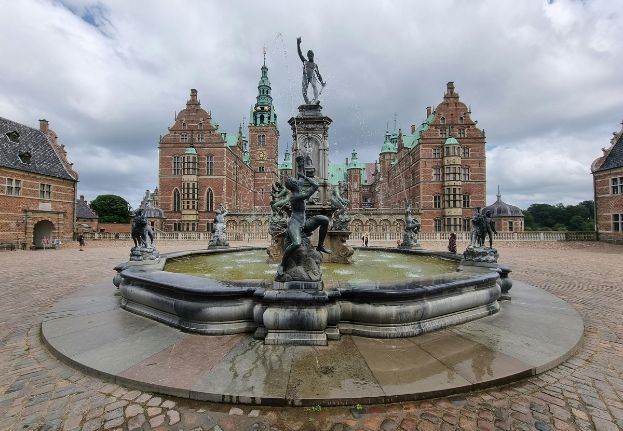
Frederiksberg Castle – From Royal Retreat to Military Academy
Frederiksberg Castle is nestled in the tranquil Frederiksberg Garden and was originally built as a summer residence for King Frederik IV in the early 18th century. Inspired by the Italian architecture of the time, the castle was designed in the baroque style.
Over the years, the castle has undergone several expansions to accommodate the royal family use, transforming it into the grand three-winged estate seen today. A balcony overlooks Frederiksberg Gardens, once a private garden, but now open to the public.
Since 1869, the castle has served as the home of the Royal Danish Military Academy, where Danish army officers receive their training.
Find Frederiksberg Castle at Roskildevej 28A, 2000 Frederiksberg C.
Take Stromma’s Hop On-Hop Off bus to stop 27 – Copenhagen Zoo.
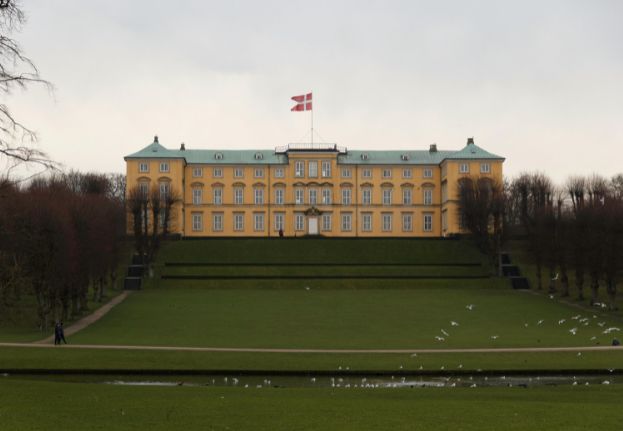
From Royal Hunts to Official Lunches at Hermitage Palace
Beautifully located in the Deer Park just north of Copenhagen, you’ll find the Hermitage Palace, known in Danish as Eremitageslottet. For years, this was the center for parforce hunts and is still in use by the royal family today - though now it’s for official lunches rather than hunting parties.
Originally, the palace was a two-story timber house built in 1694 by King Christian V, but it was demolished and rebuilt to the current form between 1734-1736.
As the palace is still in use, it's very rarely open to the public, but you can still enjoy a walk around the surrounding park, where you’ll most likely encounter more deer than you can count.
Find the Hermitage Palace at Dyrehaven 4, 2800 Kongens Lyngby
How to get there by public transportation:
- From Copenhagen Central Station, take S-train Line C to Klampenborg St. (approximately 20 minutes)
- Take bus 388 to Eremitagevej (approximately 5 minutes)
- Walk to the palace (approximately 1.5 kilometers)
- Plan your trip with Rejseplanen

Take a Walk Through the Baroque Gardens of Fredensborg Palace
As Fredensborg Palace is still in use, it’s not possible to explore this magnificent building from the inside, but the palace is still worth a visit.
Built in 1722 by King Frederik IV as his residence, Fredensborg Palace has played a prominent role in royal life over the years and is often the setting for important celebrations, such as silver wedding anniversaries and birthdays.
Around the palace, you can enjoy a walk through the largest baroque garden in Denmark, spanning nearly 120 hectares! Explore the ‘Valley of the Norsemen’, where 68 sandstone figures represent the farmers and fishermen from Norway and the Faroe Islands.
Find Fredensborg Palace at Slottet 1B, 3480 Fredensborg.
How to get there by public transportation:
- From Copenhagen Central Station, take S-train line A to Hillerød St. (approximately 38 minutes)
- Take train 930R (Lokalbane) to Fredensborg St. (approximately 8 minutes)
- Walk to the palace (approximately 799 meters)
- Plan your trip with Rejseplanen
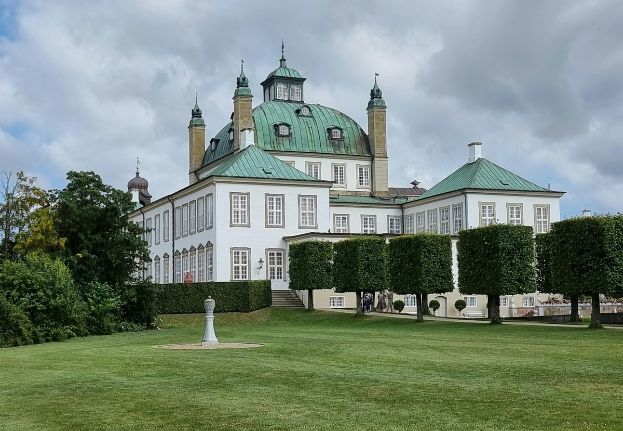
Map of Castles and Palaces
On the map below, you'll find the locations of the castles and palaces mentioned above.









